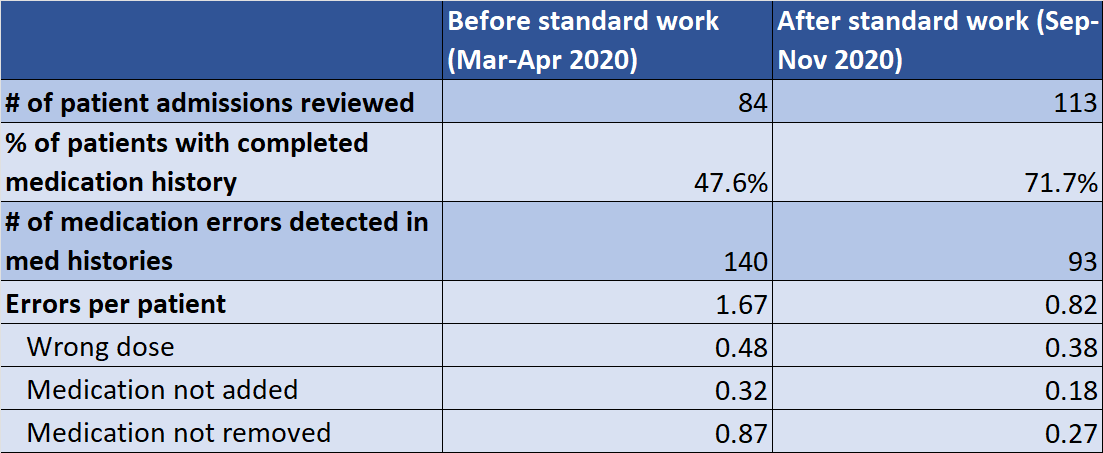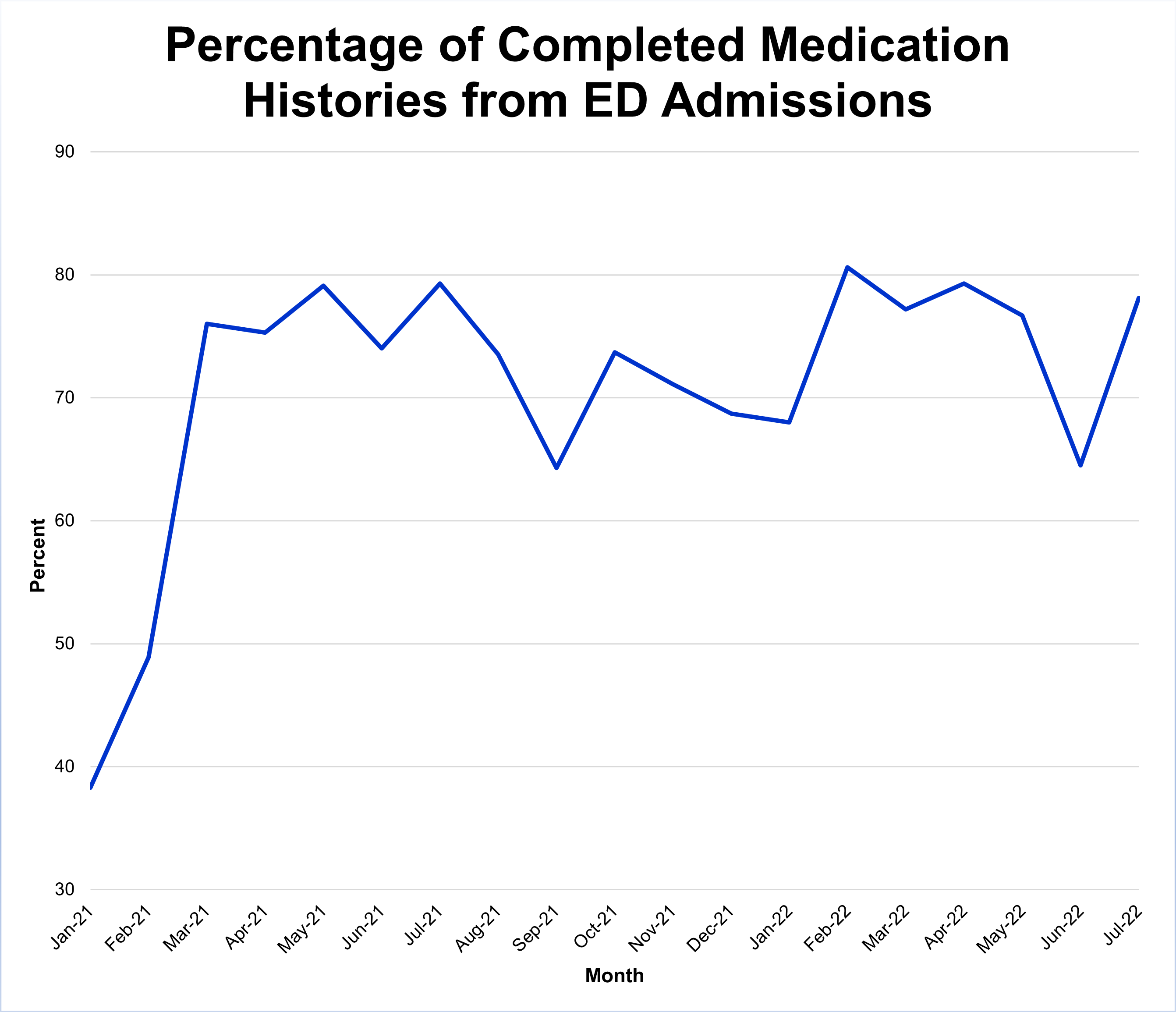Background: Correct home medication histories are critical to prevent harm during a patient’s hospitalization [1]. The wrong dose of a home medication or omission of a medication can result in serious drug toxicity or withdrawal. However, hospital medicine providers and pharmacists may have limited time and resources to perform thorough medication histories for all patients upon admission. Pharmacy technicians can be trained to perform accurate medication histories in a systematic approach and at a high volume [2-3]. Such an intervention may yield cost-effective improvements in patient safety outcomes [4].
Purpose: We developed a standard work process for pharmacy technicians to obtain accurate home medication histories for all patients admitted to Duke Raleigh Hospital from the emergency department. Prior to this project, home medications were not consistently reviewed prior to a hospitalist’s admission encounter.
Description: • Feb-Apr 2020: Formed a committee with Pharmacy, Performance Services, and Hospital Medicine. Reviewed causes of inaccurate or incomplete medication histories. • Jun-Aug 2020: Jun-Aug 2020: Created a standard work document containing a step-by-step protocol for completing a medication history, including verifying meds with pharmacies, properly entering medication dosing and administration, and communicating changes to the admitting provider.• Sep-Nov 2020: Trained two pharmacy technicians to use the standard work document. Directly observed their performance to refine the medication history process. • Nov 2020 – Feb 2021: Developed an online training module to teach four more pharmacy technicians to use the standard work for admission medication histories.• Jan-Jul 2022: Implemented the standard work. Continually audited medication histories performed by pharmacy technicians. Recruited and trained more 4 more pharmacy technicians to assist with admission medical histories (currently 8 active pharmacy technicians).
Conclusions: • After training pharmacy technicians to use the standard work, the percentage of patients with a completed medication history improved from 48% to 72%, and the number of errors in the medication histories decreased.• After expanding the standard work to additional pharmacy technicians, more patients had completed medication histories. This higher percentage of completed medication histories persisted over time.• By implementing our novel standard work process, a larger majority of patients admitted to Duke Raleigh Hospital from the emergency department received a comprehensive and consistent review of their home medications. • This standard work can be applied to improve medication histories for other admission encounters, including outside facility transfers and surgical admissions. Future investigations may address its impacts on patient safety (such as reduction in adverse medication events) and admission efficiency.


